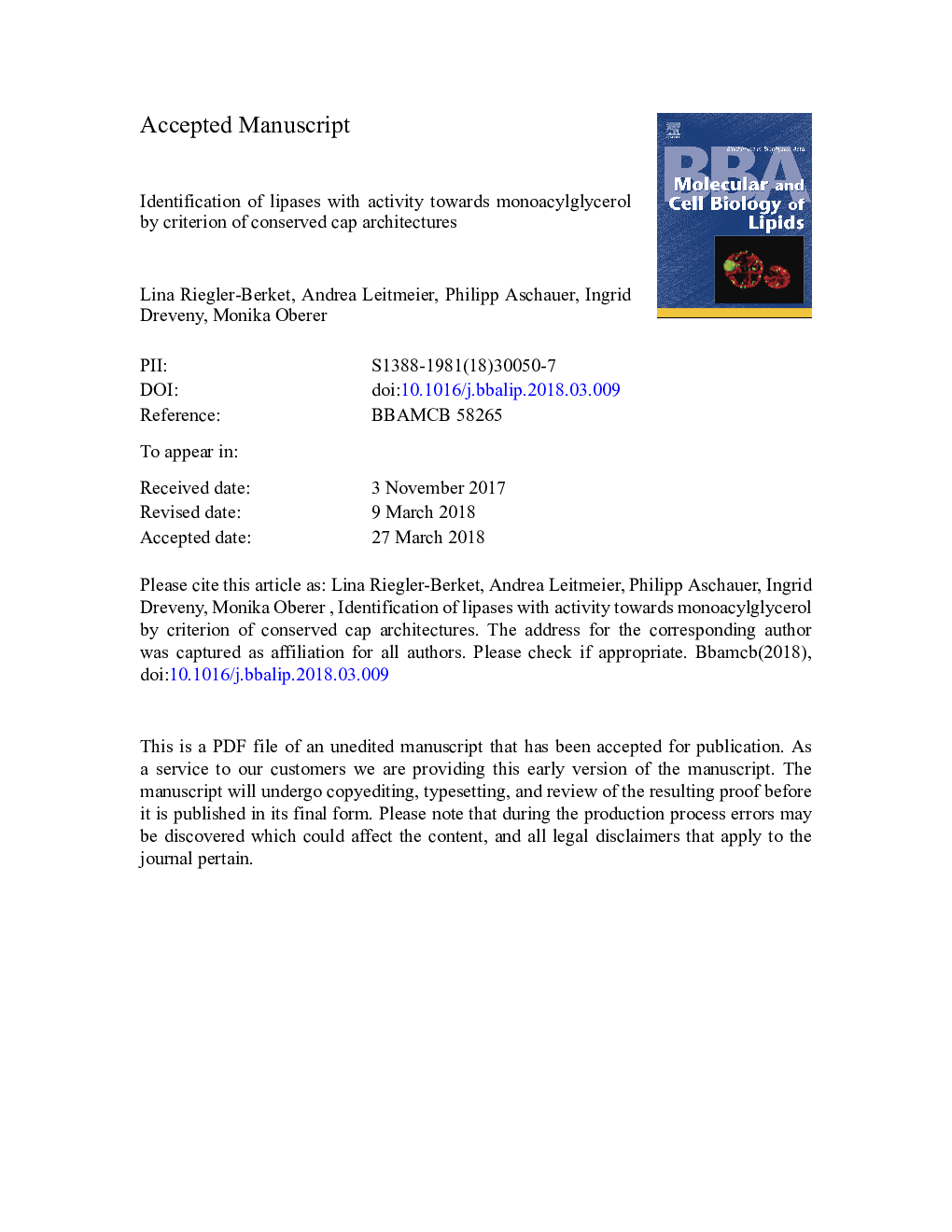| Article ID | Journal | Published Year | Pages | File Type |
|---|---|---|---|---|
| 8301302 | Biochimica et Biophysica Acta (BBA) - Molecular and Cell Biology of Lipids | 2018 | 22 Pages |
Abstract
Monoacylglycerol lipases (MGL) are a subclass of lipases that predominantly hydrolyze monoacylglycerol (MG) into glycerol and fatty acid. MGLs are ubiquitous enzymes across species and play a role in lipid metabolism, affecting energy homeostasis and signaling processes. Structurally, MGLs belong to the α/β hydrolase fold family with a cap covering the substrate binding pocket. Analysis of the known 3D structures of human, yeast and bacterial MGLs revealed striking similarity of the cap architecture. Since MGLs from different organisms share very low sequence similarity, it is difficult to identify MGLs based on the amino acid sequence alone. Here, we investigated whether the cap architecture could be a characteristic feature of this subclass of lipases with activity towards MG and whether it is possible to identify MGLs based on the cap shape. Through database searches, we identified the structures of five different candidate α/β hydrolase fold proteins with unknown or reported esterase activity. These proteins exhibit cap architecture similarities to known human, yeast and bacterial MGL structures. Out of these candidates we confirmed MGL activity for the protein LipS, which displayed the highest structural similarity to known MGLs. Two further enzymes, Avi_0199 and VC1974, displayed low level MGL activities. These findings corroborate our hypothesis that this conserved cap architecture can be used as criterion to identify lipases with activity towards MGs.
Keywords
Related Topics
Life Sciences
Biochemistry, Genetics and Molecular Biology
Biochemistry
Authors
Lina Riegler-Berket, Andrea Leitmeier, Philipp Aschauer, Ingrid Dreveny, Monika Oberer,
